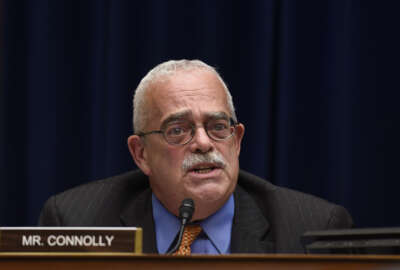Will Trump follow longstanding tradition for adjusting federal pay in 2018?
The full 2018 budget proposal could include a 1.9 percent pay raise for federal employees. This number is in line with the annual pay adjustment formula set under...
As some civilian agencies are beginning to expect the unexpected amid proposals to implement major budget cuts in 2018, one thing could remain consistent.
President Donald Trump appears to be following a longstanding, traditional formula for adjusting federal employee pay in 2018.
The Washington Post first reported the Trump administration’s intention to raise federal employees’ pay by 1.9 percent in 2018. This number is in line with the annual pay adjustment formula set under Title 5 of the U.S. Code for most federal employees under the General Schedule.
That formula equals the percentage increase in the Employment Cost Index (ECI) between September 2015 and September 2016, less than one half of a percentage point.
The ECI went up 2.4 percent in September 2016. Therefore, the base General Schedule increase for 2018 would be 1.9 percent — in line with reports of the Trump administration’s plans for next year.
An OMB spokesperson told Federal News Radio it could not confirm the 2018 raise.
The process for setting federal employee pay can be long, complicated and multifaceted.
The President can ultimately choose to differ from the ECI formula and must tell Congress of his alternative by Sept. 1.
Presidents often give word in their annual budget proposals of their intention to raise or freeze pay for federal employees under the General Schedule. Former President Barack Obama did so in 2009 in his first budget request.
Trump’s budget blueprint, which he released last week, made no mention of federal employees’ pay and benefits. A more detailed budget plan with more policy initiatives should be out sometime in May and could include further indication of Trump’s plan for setting pay in 2018.
Federal employees, on average, earn about 34.07 percent less than their counterparts in the private sector, according to the latest data from the Bureau of Labor Statistics and Office of Personnel Management. That’s down slightly from the previous year’s estimate of 34.92 percent.
Congress passed the Federal Employees Pay Comparability Act in the 1990s, which was designed to eliminate this pay gap between public and private sector workers. But lawmakers have never set aside enough funding to do so.
As it has happened in recent years, the President often submits an alternative pay plan that specifically allocates amounts toward across-the-board raises and locality pay adjustments for the year.
Therefore, the actual and specific amount that an employee receives may depend on his or her geographic location.
Federal employee pay raises have risen slightly in recent years after two years of 1 percent raises and three years of pay freezes.
| History of Federal Employee Pay Raises | ||||||||
| Year | Pay raise | |||||||
| 2009 | 3.9 percent (with locality pay) | |||||||
| 2010 | 2 percent (with locality) | |||||||
| 2011 | 0 percent | |||||||
| 2012 | 0 percent | |||||||
| 2013 | 0 percent | |||||||
| 2014 | 1 percent | |||||||
| 2015 | 1 percent | |||||||
| 2016 | 1.3 percent (with locality) | |||||||
| 2017 | 2.1 percent (with locality) | |||||||
Congress can also offer alternatives, either through the budgetary and appropriations process. Or Congress can remain silent on federal employee, which it’s done for the past few years.
Yet it hasn’t been without trying.
Rep. Gerry Connolly (D-Va.) and Sen. Brian Schatz (D-Hawaii) in January introduced the Federal Adjustment of Income Rates (FAIR) Act, which would give most federal employees a 3.2 percent raise in 2018 — a 2 percent pay increase plus a locality pay adjustment of 1.2 percent.
Connolly has introduced similar legislation under the same name in previous years. Democrats have consistently supported it, but neither bill has gone far.
Obama signed off on a last-minute 2.1 percent pay raise for most civilian and military employees for 2017, which superseded the original order he signed that called for a 1.6 percent raise for most federal workers.
Copyright © 2025 Federal News Network. All rights reserved. This website is not intended for users located within the European Economic Area.
Nicole Ogrysko is a reporter for Federal News Network focusing on the federal workforce and federal pay and benefits.
Follow @nogryskoWFED





